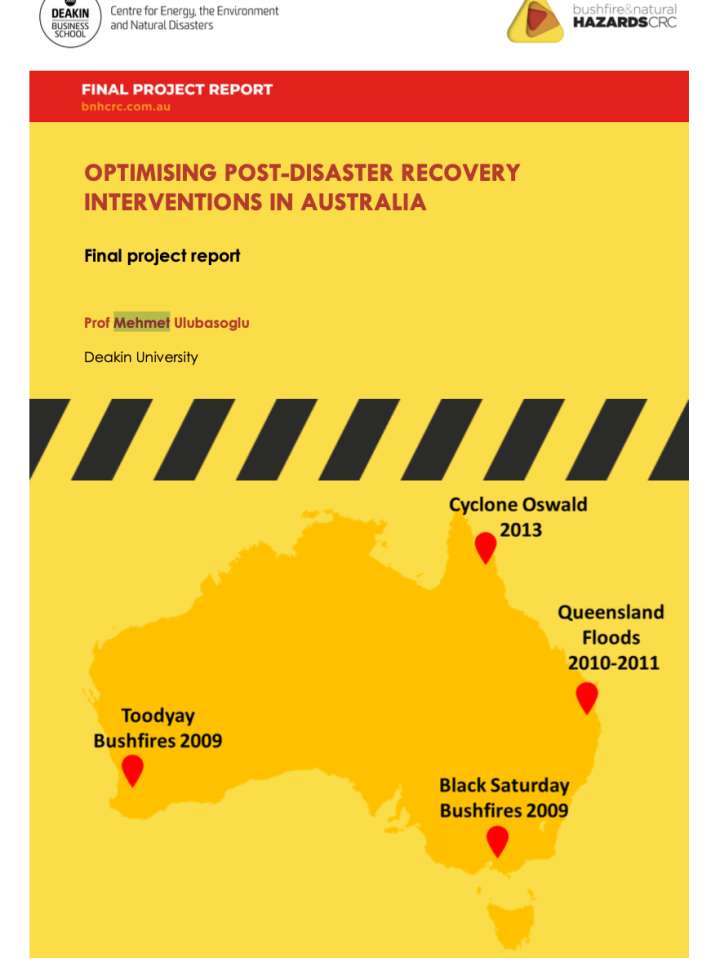Optimising post-disaster recovery interventions in Australia
This project estimates the impact of four disasters in recent Australian history on income of individuals residing in disaster-hit areas. By defining individuals’ ability to return to their pre-disaster income levels as economic resilience, the paper focuses on the following case studies: The 2009 Victorian Black Saturday bushfires, the 2009 Toodyay bushfires, the 2013 Tropical Cyclone Oswald, and the 2010-11 Queensland floods. Through real-life case studies, our research helps illustrate how these events—of different types, localities, and scales—impact and ripple through communities and the broader economy over time.
The research finds that the extent of the economic impact of disasters on individuals’ income depends on the type, intensity, and location of the disaster. This finding departs from most policy assumptions, which tend to put all the disasters into the same basket when designing relief and recovery programs. The paper also finds that time frame for recovery matters. This research has also demonstrated that the burden of lost income due to the disasters is not borne equally. That is, the income gap routinely increased after disasters.

